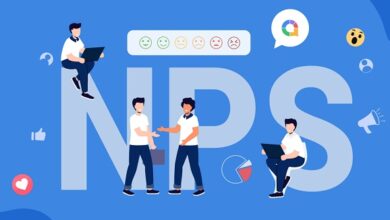Individual development plan examples its importance and design
What is the IDP plan?
In this article we will provide you the information about Individual development plan examples its importance and design.
The IDP is the Individual Development Plan , a tool used by professionals, in conjunction with the company, to prepare growth guidelines for their careers. It works as a kind of strategic planning for the individual’s career , with forecast of actions and results in the short, medium and long term. We explain in more detail, in this other blog post: what is IDP.
How important is the IDP plan for companies?
If the IDP is an individual plan and is of interest to the professional, why should companies be concerned about it? Because employee development is transformed into growth for the business . Also, professionals in constant evolution are more productive and generate more value for companies, especially in the long term.
Below, see some advantages perceived by companies that implement the IDP plan.
1-Most qualified teams
IDP may even be an individual tool, but its benefits are collective. This occurs, in the first place, because a professional who is constantly learning takes this energy to the group in which he is inserted, urging others to do the same. In this way, each one ends up bringing new guidelines, new methodologies and ideas to make the work even more efficient.
Secondly, because all members of the group will have their own IDPs, therefore, each of them will be following their development plan, in parallel. This gives the team more balance and greater synchronicity with regard to career goals.
2-More efficient teams
Professional growth involves seeking to improve the efficiency of deliveries, whether through the use of more modern and effective tools, or through learning better techniques and technologies. In the end, the teams are strengthened by members who are much better prepared to deal with the challenges that arise, taking the company to new levels of performance in the market.
3-Most satisfied employees
Stagnation causes great discomfort in people, especially when we think about the younger generations, from millennials onwards . These professionals need to feel motivated all the time, instigated to the new, to the next step.
In this sense, the IDP promotes a kind of preview of the near future, showing these young people where they can go and how to do it. All this movement brings satisfaction to them , who work with more engagement and focus on results.
So they know what the fruits of their efforts will be, and they strive even more vigorously to reach the next stage.
Importance of IDP for employees
Just as important for the company, the individual development plan provides countless benefits to employees, starting with the possibility for them to develop new skills and competences.
It can also be highlighted that the individual development plan can offer employees:
Professional evolution: IDP is important for employees to develop new skills and grow professionally.
Career plan: It is possible through the IDP to envision a more consolidated career plan, as the professional will be able to see which goals and objectives he must achieve in order to evolve.
Self-awareness: The IDP is also important for the employee to have a macro view of their qualities and defects and to reflect on their development possibilities.
Promotions: This possibility of professional growth and evolution makes life easier for employees so that they can create new ambitions in the company and be better prepared to pursue positions and promotions.
Alignment of your goals with those of the company: The individual development plan also makes it easier for there to be an alignment of expectations between the company and the employee, and for there to be greater space for dialogue between them, as everyone will have to express their concerns and expectations, so that all the plan’s objectives are met.
How to design an efficient IDP plan?
There are different tools that can be used in preparing a IDP.
To help build a document assertively, you can turn to 5W2H.
This method basically consists of putting together a list of questions and answers about a specific project, focusing on a specific goal.
5W2H can be read like this:
5W:
- what → what
- Why → Why
- Where → Where
- When → When
- Who → Who.
2:00:
- How → How
- How much → How much does it cost.
Thus, the IDP based on the 5W2H makes it clear what needs to be done , for what reason, in which location, with what deadline and by whom.
In addition, strategies are elaborated, actions are determined and it is foreseen how much they will demand of resources.
Follow the preparation of a IDP based on 7 questions:
1. WHAT will be done?
To reach a goal, you must first define it.
In the case of a IDP, the “what” refers to the development goal .
Some questions that help guide this first step:
- What needs improvement?
- Which skill should be improved?
- What behaviors will be worked on?
- Is the objective related to some technical competence?
- What do you want to achieve at the end of the plan?
2. WHY will it be done?
Just as important as knowing where you are going is understanding what drives a person to a certain point.
Thus, the motivation for choosing that goal works as a kind of fuel.
The more motivated to carry out the plan, the better the concentration and focus.
Therefore, the motive that drives the search for a result is very important and needs to be documented in the IDP.
3. WHERE will it be done?
Recording where individual development will take place is part of the plan.
With this relatively simple information , many other IDP data can be changed.
Examples of questions this step seeks to answer:
- Will large displacements be needed to carry out the improvement?
- Are there good quality options close to the collaborator?
- Can the company provide this type of instruction for professional development?
4. WHEN will it be done?
Deadlines are critical to any plan. Through timetables and deadlines, it is possible to monitor the IDP‘s progress step by step.
It is important to be realistic about the time needed to complete each of the phases.
Therefore, it is no use creating deadlines that are too short, because they may not be met, and in this way, they can cause frustration .
Likewise, dates too far away can discourage action and cause tasks to be abandoned.
5. By WHO will it be made?
As this is an individual plan, it is the interested person who will promote the completion of the steps.
However, the collaboration of other individuals may also be required to bring about different parts of the IDP.
Therefore, when naming those responsible for each stage of the plan, it is necessary to monitor how the people involved have acted. And, thus, promote corrections and praise for the fulfillment of tasks.
6. HOW will it be done?
Once you’ve figured out what needs to be done, why, where, when and by whom, it’s time to figure out how to do it all.
This is where the strategic part of the plan comes in .
At this time, the best actions to reach the expected result will be defined.
Some important questions:
- What methods will be used?
- What paths can be taken?
- What can be done to make reaching goals faster and more accurate?
7. HOW MUCH will it cost to do it?
The final question is focused on values: how much, in terms of financial and material resources , in addition to time , will it take to reach the expected result?
Individual development needs to be understood as an investment.
For this, it is necessary to make a financial contribution to, in the medium or long term, achieve the expected return.
Thus, it is essential to calculate and record how much will be needed to invest in order to fully develop.
Why use the 5W2H?
By using the techniques of 5W2H planning, it is easier to define everything that needs to be done to reach the goal.
Thus, the analysis of the current condition in which the professional finds himself is carried out and, at the same time, the evaluation of possible scenarios is carried out.
In this comparison, it is possible to reach what is missing for the individual to be successful.
Then, strategies are developed to take you from point A to B , such as deadlines, resources and motivations.
Finally, it is also important to nominate other people who will be responsible for certain stages of the planning.
In this way, an individual development plan will permeate all of these issues, with the potential to fulfill a person’s career expectations.
Main challenges of the Development Plan
The IDP can be developed independently or in partnership with the company where the person works.
Both cases have their challenges, but with a few tips, it will be possible to overcome the obstacles between the current state and the desired goal.
Check out!
Self-Employed Individual Development Plan
The first big question is, precisely, to find out what needs to be done .
After all, if the entire “map” is well done, but the destination is wrong, the document will not fulfill its function.
Therefore, invest a lot of time in understanding your current profile and how you need it in the future so that your personal and professional goals are achieved.
Furthermore, all planning requires discipline and self-control to be carried out in the best possible way. So, always try to follow the definitions and strategies that have been defined.
In exceptional cases, be flexible and allow yourself to change the route or certain points of the POI.
Individual Development Plan with the Company
On the part of the Human Resources area or the company’s management, the adhesion of professionals to the IDP is an obstacle to be faced.
Therefore, showing them the importance of development is critical.
Professionals, on the other hand, may encounter resistance from the company itself in offering diagnoses and suggestions. At this point, it is always good to remember that feedback is a powerful tool to bring the company and its employees closer together.
Thus, it is up to individuals themselves to show their point of view to managers and to argue favorably on aspects in which the company can be a good partner for individual development.
Thus, it is necessary to find a common denominator that favors both the organization and the people.
Examples of IDP
The Individual Development Plan can be used for both learning and personal or professional improvement .
So, let’s go to examples that address possible directions.
Individual Development Plan – Personal
What: have a healthier life.
Objective : To reduce current blood glucose levels from 150 mg/dL to normal levels of 100 mg/dL.
Why : to avoid further damage to health, in the medium and long term, staying healthy for much longer.
Where: gym and eating places inside and outside the home.
When: in the next five months.
Schedule :
- First month – reduce the rate from 150 mg/dL to 140 mg/dL
- Second month – reduce the rate from 140 mg/dL to 130 mg/dL
- Third month – reduce the rate from 130 mg/dL to 120 mg/dL
- Fifth month – reduce the rate from 120 mg/dL to 110 mg/dL
- Fifth month – reduce the rate from 110 mg/dL to 100 mg/dL.
Who:
- Academy: Instructor Assessment A.
- Food: evaluation with nutritionist B.
Like:
- Physical exercise 3 times a week.
- Healthy eating, according to nutritional guidelines.
How much:
- R$ X monthly with gym classes.
- R$ Y of consultation with a nutritionist.
- R$ Z of special foods.
Individual – Professional Development Plan
What: Improve Excel program usage skills.
Objective : use the software with ease at the advanced level of knowledge.
Why : to streamline the use of spreadsheets and save time for other tasks.
Where: online excel course .
When: within 3 months.
Timeline:
- current month – course enrollment
- next month – passing the first test of the course
- following month – passing the second test of the course
- last month – course certification.
Who: the beneficiary of the plan itself.
Like:
- Theoretical and practical classes in the course twice a week.
- Home study and exercise twice a week.
- Practice in the work I do at the company.
How much:
- R$ X monthly with course classes.
- R$ Y of transport.
- BRL Z of certificate issuance.




